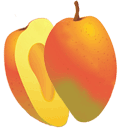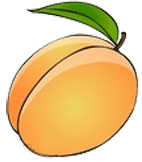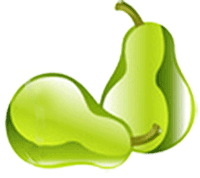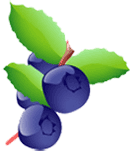STORAGE OF FRUITS

Many gardeners are faced with a surplus of produce through the season. Consider canning, freezing or drying the surplus,since all produce stored fresh, in most cases, lasts only a short time. Handle produce carefully since staining can reduce storage life and break the “skin” of products, allowing diseases to start. Check produce in storage regularly and discard any items that have begun to deteriorate.
Here are certain fruits are given with their harvesting details and the following fruits may be with the same quality as fresh if they are being kept under the refrigeration cool of about 35 to 40 degree F.![]() Blackberries
Blackberries
Fruit develops dull black color with plump, juicy fruitlets as it ripens; fruits soften and develop characteristic flavor. Harvest every 2 to 3 days. Cool immediately, use within 3 to 5 days. Currants. Mature fruit will soften slightly, become juicy, and develop an intense color. For jelly, harvest before completely ripe, when pectin content is high. Storein refrigerator up to 2 weeks.
![]() Elderberries
Elderberries
Harvest when fruit is plump, color changing from shiny to dull purple, and just beginning to soften. Use within 3 to 5 days. Gooseberries. Harvest as fruit color changes to light green. Some varieties may have pink blush. Pick when berries are still firm; may be stored for 2 weeks.
![]() Grapes
Grapes
A characteristic flavor and aroma develops as fruit matures. Color may develop earlier so color alone is not a guide. As grapes mature, sugar content increases and cluster stems turn from green to brown. Remove clusters with scissors or hand shears. Store in refrigerator up to 2 months.
![]() Raspberries
Raspberries
Ripe raspberries develop full color and separate easily from vine. Harvest fruit as it ripens, every 2 to 3 days. Pick by gently lifting berries with thumb or finger. Cool immediately; use within 3 to 5 days.
![]() Strawberries
Strawberries
Fully ripe strawberries are a uniformly red color, and firm but beginning to soften slightly. Harvest with green caps on to retain firmness and quality—pinch stem off about 1/4 inch above cap. Refrigerate immediately; use within 2 to 5 days. Select soft berries for immediate use.
![]() Apples
Apples
Sample for characteristic flavor and aroma as fruit begins to change color. The under color (green, immature color) will change to light green or cream. Yellow Fruit Gardens 4 or golden varieties develop golden surface color when ripening. Some varieties release from tree easily as they begin to ripen and should all be picked; other varieties can be picked as they mature. Fruit will continue to ripen after picking. Store in refrigerator 1 to 6 months.
![]() Apricots
Apricots
Harvest as fruit begins to soften and develop characteristic flavor. Handle carefully to prevent bruising. Cool immediately; store up to 2 weeks. Fruit will continue to ripen after picking.
![]() Cherry
Cherry
Mature fruit is juicy, somewhat soft and full-flavored. Quality holds better if picked with stems on. Cool after harvesting; store up to 2 weeks.
![]() Peaches
Peaches
Taste fruit for characteristic flavor and aroma. Fruit softens and becomes juicy as it ripens; ground color (immature, green color) changes to light green or cream. Fruit will continue to ripen after picking. Handle fruit carefully to avoid bruising. Cool immediately after harvest; store up to 2 weeks.
![]() Pears
Pears
Pears should be picked before they are tree-ripe; however, harvesting too early will result in poor flavor and shriveling in storage. Harvest just as pear flavor and aroma can be detected when sampling, and small spots on fruit surface change from white to brownish color. Pears harvested after best time will have some stone cells and poor flavor. Fruit will continue to ripen after picking. Storage life is 1 to 3 months.
![]() Plums
Plums
Fruit softens and develops characteristic flavor as it ripens. Color may indicate beginning of ripening, but is not a good guide. Handle gently; cool after harvest. Fruit will continue to ripen after picking. Store up to 2 weeks.



























